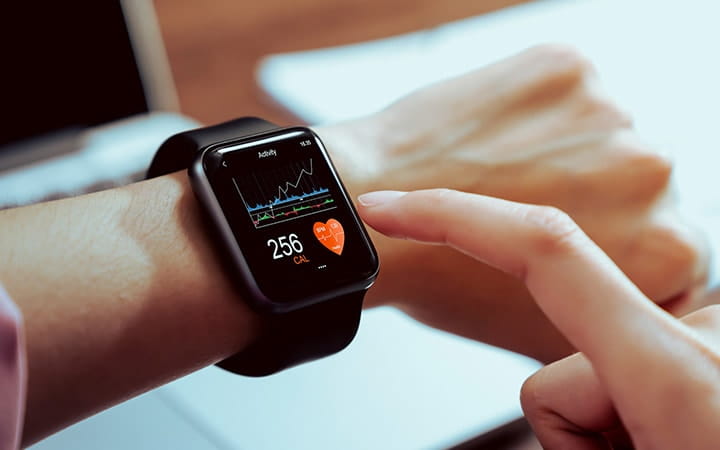Smart Watches Hold Promise to Detect Disease and Improve Health
September 08, 2022

We’ve come a long way since the pedometer. Smart watches and wearable fitness trackers today not only log steps and mileage, they also monitor sleep patterns, heart rate, calories burned and blood oxygen levels. In recent years, new models can track AFib (atrial fibrillation), an irregular heart rhythm that can lead to stroke.
Wearable technology is advancing quickly with great promise for improving health. What does the future hold?
A 2022 study found an Apple Watch app that uses artificial intelligence may help detect left-ventricular dysfunction, a type of heart failure. Also on the horizon are smart watch features to detect blood sugar and blood pressure levels.
Researchers are studying wearable technology to help detect early signs of infection by detecting changes in heart rate and skin temperature, which increase when the body is fighting an infection. Some evidence has emerged that the technology could even detect changes that are early warning signs of diseases such as cancer.
While research is underway, for the time being there remains a wide gap between having certain health data from your smart watch and knowing what to do with it.
The Future of Fitness and Health Trackers
Basic functions such as tracking activity, heart rate and even sleep patterns are helpful to many consumers. For people who work out, for example, smart watches help them hit heart rate targets, says Stephanie Griggs, PhD, assistant professor at Case Western Reserve University Frances Payne Bolton School of Nursing.
“It gives me feedback I may use to increase intensity if I’m exercising and my heart rate isn’t where it needs to be,” says Dr. Griggs, who is involved in research using wearable technology to track sleep behaviors and blood sugar levels for diabetes management.
Advances such as continuous blood pressure monitoring have significant potential to reduce cardiovascular events such as heart attack and stroke. An estimated 11 million Americans have undiagnosed high blood pressure, according to the U.S. Department of Health and Human Services.
But more advanced health tracking features may take time to prove beneficial.
“We have some struggles there,” Dr. Griggs says. “People are getting this immediate feedback and some of it may or may not be accurate. The issue with that is people are making decisions based on the data. Without having an expert to look at it, people shouldn’t diagnose themselves.”
Ideally, consumers need a pathway to share health data with their health-care provider, she says. “We need experts at the table as the technology is being rolled out, so we can guide individuals and help them interpret the results.”
For example, an algorithm that synchronizes blood sugar levels and physical activity (which can lower blood sugar) would help people with diabetes. Automated insulin delivery systems would better regulate insulin infusions.
“If we could integrate activity data, we could adjust the infusion of insulin sooner and potentially prevent some of the low blood sugars people experience, especially at night when they’re asleep,” Dr. Griggs says. “If we could do that, we could potentially improve health outcomes.”
Tags: Exercise, Fitness, Weight Loss Management


